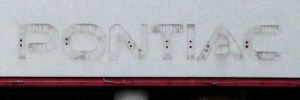















Fuel Tank Protection and Security with Pontiac Fuel Tank Cap |
|---|

|
Anthony Fontanelle
September 14, 2007
While your car’s engine fuel sending unit assembly requires a controlled working environment as it performs a sensitive engine operation for your car’s fuel lines. The intrusion of any form of contaminant or impurities could disrupt smooth operations and brew damages onto vital assembly components and may result to failure. These elements normally promote corrosion and make the components suffer from accelerated wear. To protect your car’s fuel tank, it employs a tough Pontiac fuel tank cap to keep these elements from contaminating the fuel. While it is secured via key lock application, the cap will never be detached or get loose while driving. By securing the fuel tank lines from road debris which can be potentially tire-launched, you can continually enjoy the gains of cleaner and more efficient fuel burn. The main restriction on optimizing fuel consumptions is the entry of foreign particles which are typically collected while filling the tank. The damage they cause could seriously take toll on the overall level of performance delivered by your engine. To address the need to provide your combustion cylinders with fuel at its finest form, fuel tank caps works with fuel filters to trap the smallest of particles it might have carried from the filling tanks and reservoir.
While automotive engine assemblies come in various configurations, it makes use of specific fuel tank constructions and application specifications. It is comprised of stopper kits, nipple, and clamps to secure it in place and in position to seamlessly run the fuel sending assembly unit operations. Relatively, it employs specific fitment and design of Pontiac fuel tank caps to eliminate the risks of contaminating your engine due to contaminants that might have been carried via fuel sending units. The cap is the cover you find right at beneath the fuel tank panel access area. By opening the small panel door to unfasten and fasten the cap for filling, your engine can be supplied with fresh batch of fluid with great convenience and utmost safety. As it is custom fitted to specific tank applications, you will never find difficulties in fastening the cap to secure the fuel from spilling or gushing out from the tank even as your car adapts to road irregularities. Finding replacement to stock fuel tank caps, in case it suddenly becomes broken, may seem to be a problem. Thankfully, auto-part manufacturers have conveniently made direct-fit and OEM match cap replacements available for your immediate replacement needs.
To address the structural weaknesses of factory Pontiac tank caps, improved constructions of Pontiac fuel tank cap replacements are designed not to flex or deteriorate with time. As it constantly comes in contact with elements which could typically induce wearing and corrosion among metal car parts, high grade threaded cap discs incorporate the use of rubber stoppers to seal up all possible entries for contaminants. As among the commonly used and abused car parts, they are engineered to have greater capacity to endure pressure and engine heat to effectively contain fuel vapors and support smooth fuel system operations as well as delivery mechanisms. This feature is important to eliminate the risks of random fuel vapor ignition. Also, it keeps these hazardous volatile fuel compounds from being released into the air and add-up to level of pollution agents released by your vehicle. For preventive maintenance, make it a habit to periodically check the cap for deposits and grime which tends to accumulate with age.
Source: Amazines.com
